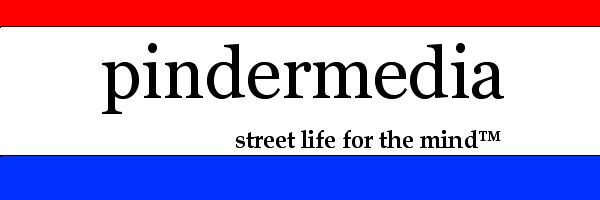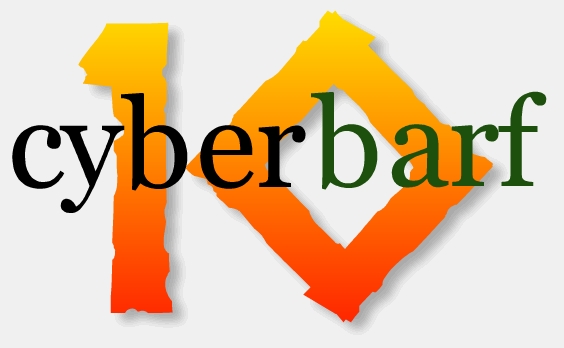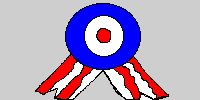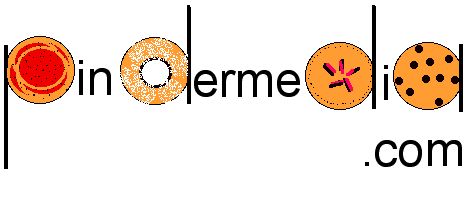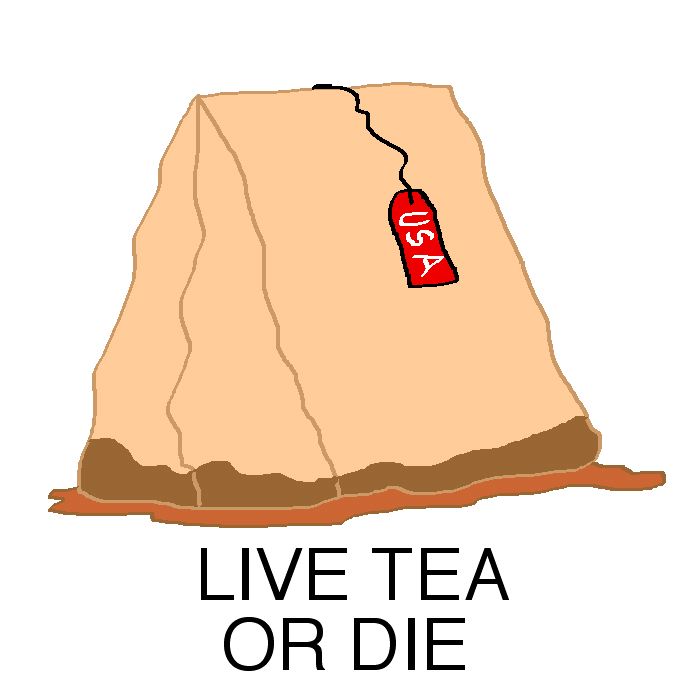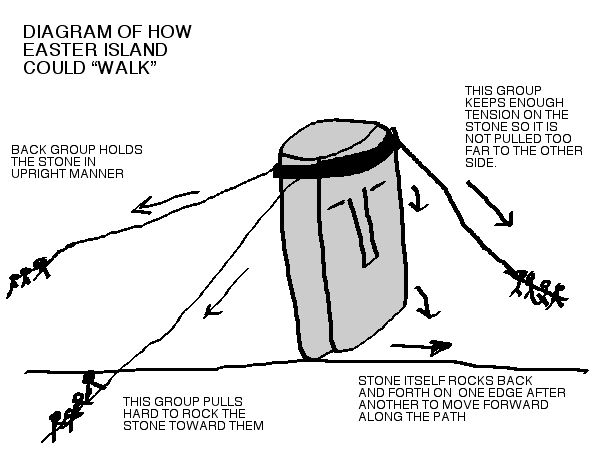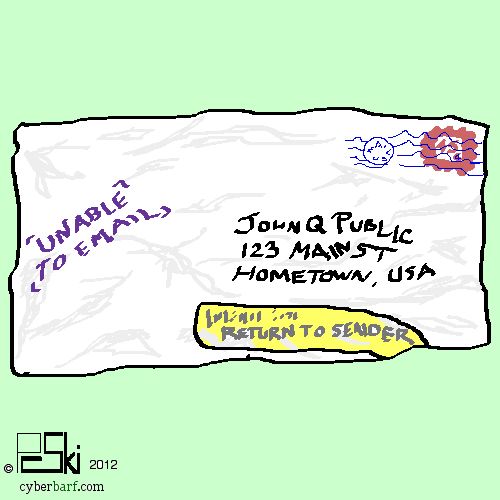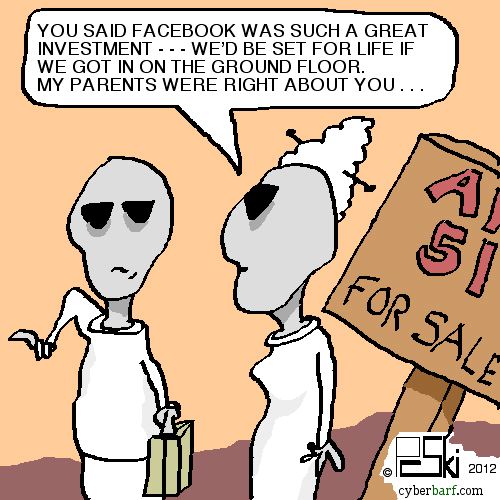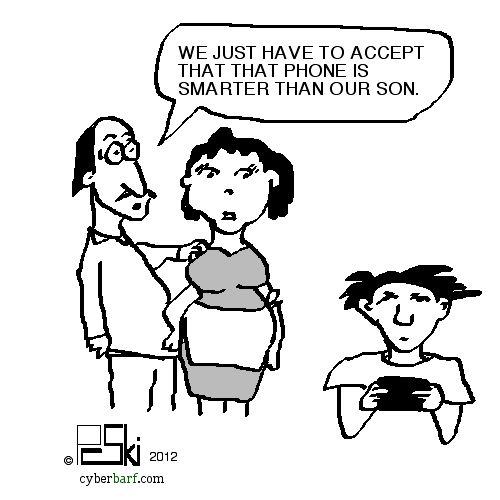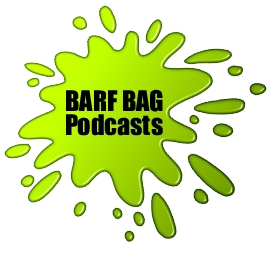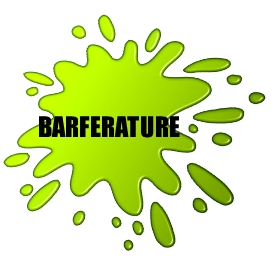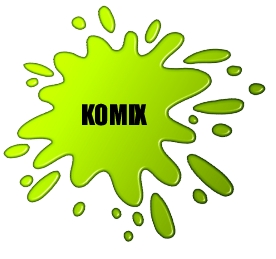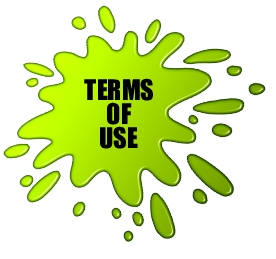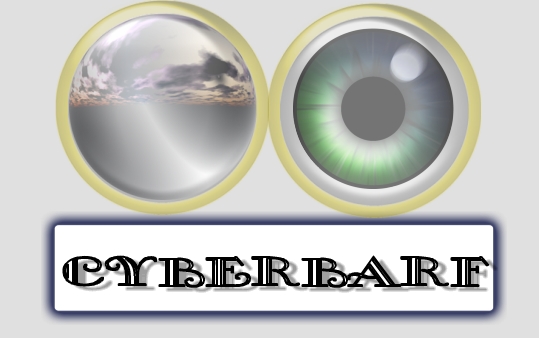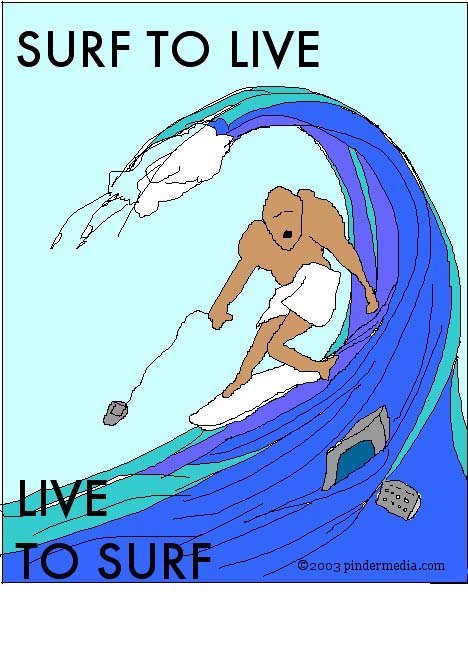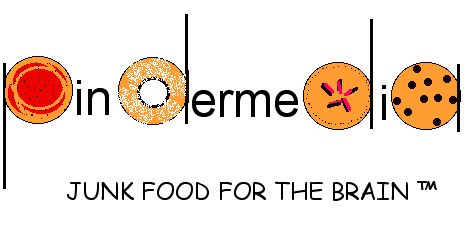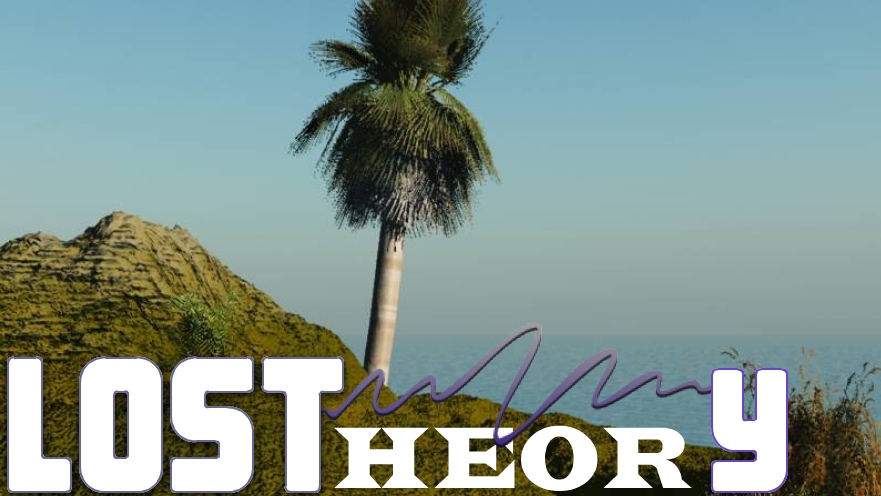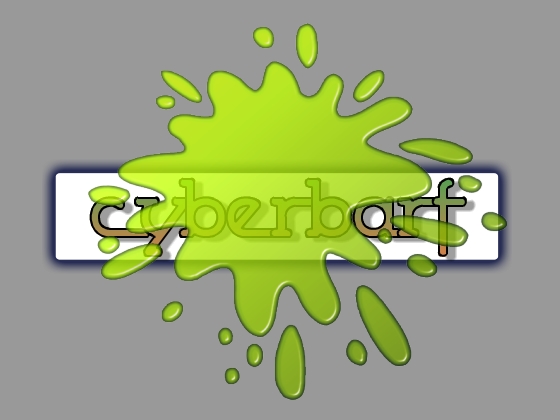|
cyberbarf.com
|
|
EXAMINE THE NET WAY OF LIFE
THANK YOUR FOR YOUR CONTINUED SUPPORT. CYBERBARF |
JULY, 2012
IN THIS ISSUE: ON THE SURFACE THE FINALE OF MURMUR:LOST SOULS PATENTLY CONFUSING EASTER EGG ON EASTER ISLAND iToons WHETHER REPORT
e
|
|
THE PINDERMEDIA STORE IS FULL OF FUN T-SHIRTS CLOTHES, HATS AND OTHER ITEMS . FUN . . . . VALUE . . .. FUN . . . . VALUE! GO FOR IT!
THE POLITICAL SEASON IS HERE! NEW T-SHIRTS ON SALE!
SUPPORT cyberbarf VISIT THE CYBERBARF STORE! Prices may vary depending on sales, allotments, inventory. |
|
cyberbarf EXAMINE THE NET WAY OF LIFE |
|
SUMMER IS FLEETING! TIME TO CHECK OUT! CYBERBARF T-SHIRTS, MUGS & MORE THANK YOU FOR YOUR SUPPORT! |
|
cyberbarf ON THE SURFACE ESSAY Microsoft is once again playing catch-up. The condiment of choice this time is the tablet market. It's new hardware device, The Surface, was taken from their grand touch screen table (which was a cool concept but with no practical sales application.) Two versions were profiled for the media. One will run Windows RT and one will run Windows 8 Pro. Microsoft has always been a software OS company. Software first, then try to port it to other hardware applications. It always needed partners like Dell, HP, Compaq and other PC manufacturers to integrate the Windows operating system into any type of computer device. This is opposite of the Apple business model. Apple has always been a hardware and software company. It created its software in conjunction with its devices. As such, it kept proprietary and quality control on both ends of machine spectrum. Since Apple owns the core machine technology, it would allow developers and peripheral makers access to its technology on Apple's terms. It is a high cost and risky strategy to have vertical control of a product line. When one is part of closed system, there are times when its technology fades quickly or is turned aside by the consumer (see, Sony). Apple has used its rebellious persona to its advantage. But Microsoft has always been part of the tame mainstream. The mainstream has dramatically shifted course. No longer is the power corporate user as the key to long term success. People have become addicted and obsessed with mobile computing devices. Sony had its Walkman line to give people their own music on the road. Apple took the concept, integrated a simple iTunes distribution system and created the iPod market which still dwarfs the competition. Motorola had cutting edge hand held mobile phone market. But Apple took the concept, integrated the iPod foundation and an easy application system, to create the popular iPhone. Early PC manufacturers created tablet computers to replace deliveryman clipboards. Digital instead of paper forms would be the next corporate wave. But those devices never caught on, killed off by the simple hand held bar code scanner. So when Apple announced the iPad, most people said the space was a barren frontier of failed projects (including its own early Newton device). Critics thought it would be an iPod on steroids - - - a not very practical gadget; an expensive status toy. Apple itself did not know how consumers would actually use the iPad: in record intensive businesses such as doctor's offices, hospitals, inventory control warehouses the iPad found a hidden market. As a digital interactive book reader it found another clever market. The app developers opened up the system for a flood of games and productivity applications. So the iPad created its own niche organically: it was never intended to be an ultrabook, a new Kindle, a super music/movie player or a business machine. It was one of those closed design systems that spark creativity in users who apply themselves into new uses for their device. Maybe Microsoft is looking to capture the spark of a user movement with its new tablet line. But just as the iPad is a world to itself with specialized tabs like the Kindle or Nook orbiting around it, the market for a Windows tablet is unclear. Critics immediately wondered who is willing to create Windows tablet applications? Other commentators thought whether this move was trying to position Microsoft as a major player in the mobile market: needing a Windows phone and tablet just to keep itself relevant in the Apple and Google discussions. At the LA announcement, the tech press had very limited access to the devices. The jaded press corps was quick to realize that these were more prototypes than actual production models. Not all the features discussed in the demonstration were available for hands-on use. Some remarked that the response time was sluggish. Writers only had a few minutes of time with the tablet. The consensus was not stellar. It could be a rush to market as well as a rush to judgment. When Apple or Android devices debut, they are basically ready for sale in a short time. But Microsoft could not give specifics on price or availability. It left people second guessing how powerful or how useful the Surface would be below its outer shell. If one leaves the convention hall whispering about another Zune, it was not a good night for Microsoft. Then, about a week later, Google announced to the world its new Nexus 7 tablet device. The seven inch screen device is running the latest Android operating system, Jelly Bean. Unlike the Microsoft Surface, the Google tab will go on sale in July. Google has positioned this device as one step up from an Android phone, and smack dab in the Kindle Fire wheelhouse. The price point of $199 is significantly cheaper than an iPad, but the Nexus 7 has a smaller screen and less tablet native applications. Google, like Microsoft, is trying to push its own mobile operating system on to more platforms as possible to keep up in the growing mobile device wars. Google is also following the Apple business model by integrating the new tablet into the Google Play digital market environment where users can connect to its Android store for movies, shows, applications and books. The entertainment field has begun to shrink into the portable hand held device platform over the laptop/ultrabook market. The Big Three are all vying for first place in the hearts and minds of the consumer public. Lost in the dust appears to be the old PC makers like Dell and HP and the initial business wunderkind, RIM the maker of Blackberry devices who announced another bad cratering quarter to Wall Street in late June. So in this Olympic year, one could say that on the podium the real players are: gold standard Apple, silver android Google, and bronze windows Microsoft. cyberbarf MURMUR:LOST SOULS REAL NEWS KOMIX We conclude our new graphic novella with the finale in Part Seven.
cyberbarf PATENTLY CONFUSING ARTICLE A patent government grant of the exclusive right to make, use, or sell an invention, usually for a limited period. Patents are granted to new and useful machines, manufactured products, and industrial processes and to significant improvements of existing ones. Patents are also granted to new chemical compounds, foods, and medicinal products, as well as to the processes for producing them. Even though elements of nature were not subject to monopolistic control, patents can even be granted to new plant or animal forms developed through genetic engineering, under the theory that human intervention lead to the creation of a new, unique thing. The whole purpose of the patent system is to give an inventor a commercial opportunity (with an exclusive monopoly) to sell a new and useful invention to the public. The idea of a good patent system is that it creates the incentive for people to discover new things or processes that make manufacturing more efficient, productive and create new markets in the stream of commerce. Discovery and creativity are important factors in a growing, vibrant economy. In order to be granted an exclusive right in a product, thing or process, an invention must be considered novel and useful in order to receive a patent. It must also represent a relatively significant advance in the state of the art and can not merely be an obvious change from what is already known. Such stipulations are meant to reduce the number of inventions that modify existing products in minimal ways. Patents are frequently granted for improvements of previously patented articles or processes if the requirements of patentability are otherwise met. Because the patent gives the owner the right to exclude others from making, using, or selling the invention, the inventor may authorize others to do any of these things by a license and receive royalties or other compensation for the privilege. Like in copyright, an employee of a company makes an invention as part of research and development assignments is classified a work-for-hire so the employer would own the patent when it issues from the Patent and Trademark Office. If any persons make use of a patented invention without authorization, an infringement action for damages and injunctive relief can be brought by the patent holder. Patent litigation in the United States is one of the most expensive forms of court battles. For it is expensive in terms of specialists in science and attorneys, lengthy in terms of time to get to trial, and turns on an “all or nothing” risky outcome for the litigants and their businesses. Even though patent applications are vetted by trained examiners before issue, litigants can invalid patents or claims through litigation, and in some cases, invalid entire patents as failing to meet the requirements under the law. After the patent term expires, the invention is open to public use. Patent conflicts in the software arena have been going on for a long time. In 1998, a battle over software standards also escalated into a major lawsuit. Sun Microsystems sued Microsoft in October in a battle for control of Java language software standards. Sun's suit claimed that Microsoft's Internet Explorer 4.0 software contained a variant of Sun's Java programming language that differed from the standard version. Sun accused Microsoft of infringing on Sun's Java trademark, false advertising, breach of contract, unfair competition, and interference. Microsoft denied Sun's allegations and countersued, seeking a dismissal of the Sun suit and asking the court to uphold Microsoft's right to claim that its products were ''Java compatible.'' The same battle was fought in 2012 when Oracle (successor to Java software) faced off in an expensive patent and copyright trial against Google over whether the use of Java APIs constituted illegal infringement. Oracle lost. In Chicago, a U.S. District Court judge basically threw out countersuits for patent infringement on cell phone technology filed by Apple and Motorola. The judge invalidated some claims and then decided neither party could prove any damages. He then concluded that neither side should be granted an injunction. He concluded the entire US patent system “a mess.” Part of the problem is how the law and commerce treats software. A machine, a device and assembled system is a tangible object that has always been subject to patentability. An inventor would engineer components that would create a working prototype of his invention. Software is more an intangible collection of information which transposes ideas through computer commands to create outputs on computer devices. Traditionally, the expression of intangible ideas into a written form were covered by copyright laws. But copyright laws only protect the actual expression of the ideas, not the ideas themselves, so other persons could take the author's ideas and rework them into their own, unique form. It is the conflict between standards for practical use of computer systems and claimed invention of new technology systems that is at the root of the current patent wars. Computer software was always copyrightable; because one put their ideas into a written, tangible form (code), the work could be copyrighted by the author. The author could control the distribution, licensing and sales of the copyrighted work. But computers themselves became more complex the software that is becoming an ever-larger part of the computer system, are growing more and more complicated, requiring teams of programmers and years of effort to develop. As a consequence, a new subdiscipline, software engineering, has arisen. The development of a large piece of software is constructed as an engineering task, to be approached with the same care as the construction of a building. The software-engineering process is usually described as consisting of several phases, variously defined but in general consisting of (1) identification and analysis of user requirements, (2) development of system specifications (both hardware and software), (3) software design (perhaps at several successively more detailed levels), (4) implementation (actual coding), (5) testing, and (6) maintenance. Even with such an engineering discipline in place, the software-development process is expensive and time-consuming. Even automated tasks such as open computing program languages have not lessened the engineering integration issues of software programs into new hardware and computer chip designs. So at some point, experts in the computer field decided that software engineering was on par with hardware engineering in terms of patentability of a system that creates a new, valuable output. The federal courts bought into this concept when it allowed a financial software patent to be upheld. The court found that even though many of the ideas of mathematical formulas, comparison of data base information, and manipulation of data which could be done, in theory by hand, but done by programmed algorithms, had all the attributes of a machine processing inputs to create a tangible result: new information. The concept that one could now patent an intangible process of ideas that create an informational output put the software patent on a rocket course of confusion. A computer application can be viewed as an apple (copyright) or as an orange (a patented process). But copyrights and patents were never considered the same thing; thus the confusion in trying to explained the merged concept of an orange apple. One can go on line and read a software patent application (www.uspto.gov). If a lay person comes away with the impression that a software patent contains a vast amount of common verbiage of computer operations in a tangled description of claims of a new and unique inventive process or result, you would not be alone. Patent experts and legal scholars are still debating whether or not a software application deserves patent status, especially when core functionality of computer languages and APIs are needed for any computer application to run on a hardware platform. Many software applications are merely claiming a new result of manipulating source data as a patentable invention; critics decry that this is merely taking something obvious (like keyword search parameters) and calling it something unique and new. Maybe the Oracle, Apple and Motorola case defeats will signal a change in the confusing perception of software patents in America.
cyberbarf EASTER EGG ON EASTER ISLAND DISCOVERY Though it is summer, it is no reason not to learn something about history (and in the process about ourselves). A team of forensic archeologists working with National Geographic came to Easter Island in the Eastern Pacific Ocean to try to solve an ancient mystery: how did the huge human faced monolithic stones get to their final resting place? Easter Island (Isla de Pascua), is a Chilean territory located in the eastern Pacific Ocean. The island is famous for its giant stone statues. It stands in isolation 1,200 miles 2,200 miles west of Chile. The island forms triangle 14 miles long by seven miles wide, with an area of 63 square miles. Its highest point, Mount Terevaka, is 1,969 feet above sea level. Today, it is populated by people predominantly of Polynesian descent who live in the village of Hanga Roa on the sheltered west coast. Easter Island is small and hilly, formed by a series of separate underwater volcanic eruptions. The island is mostly covered with grassland. The climate is subtropical, and farming is the traditional occupation. Cattle are raised, and some sweet potatoes, sugarcane, figs, bananas, gourds, taro, corn (maize), and potatoes are grown. Tourism, however, has become the mainstay of the economy. There is no natural harbor, but anchorages are found off the coasts of neighboring islands. There are a commercial airport, with flights from Santiago, Chile, and several small hotels on the island, but horses and four-wheel-drive vehicles are needed for local transport because of a lack of paved roads. The first European to see Easter Island was the Dutch admiral Jakob Roggeveen, in 1722. In 1888 the island was annexed by Chile, which leased nearly all its territory for sheep raising. Sheep ranching came to an end in the mid-1980s, and the island is now administered by a civilian governor. Chile has declared the entire island a historic monument. Initially inhabited about AD 400 by Polynesians from the Marquesas, Easter Island has long been famous for the rongorongo hieroglyphs and remarkable monolithic stone statues in human form. They have evoked various legends and theories as to their origin. The statues, carved from tuff, a soft volcanic stone, range in height from 10 to 40 feet. Some stones weigh more than 50 tons. According to the Encyclopedia Britannica, the non-Polynesian vestiges on Easter Island have given rise to much speculation, but the most recent archaeological work indicates that most of the statues were erected in the Middle Period (AD 1000-1600) and that environmental degradation and fighting among the islanders (culminating in the Peruvian slave raids of 1862-63, in which about one-third of the population was carried off) brought precipitous decline to the island's fortunes. When a few of the abducted islanders were returned, they brought smallpox and tuberculosis, and the island suffered further severe depopulation and cultural decline. With the introduction of Christianity in the later 1860s, the surviving Polynesian traditions were often forgotten. Early scholars who went to the island to investigate the large stone statues that sit in a row near the ocean bluff were puzzled by the fact that the island lacked any forest or trees. How could ancient stone age people transport and install huge 10 ton stones from quarries miles away without the use of tools. Scholars have believed ancient people may have used wooden rollers to move large stone blocks over land to build the pyramids. But even modern tests of those theories have become daunting and fraught with inconsistencies. Besides, the great Euro-African structures of Stonehenge and the Egyptian pyramids are located in places devoid of forests. Some filmmakers have even tried small scale replication techniques using modern cranes to move large stone blocks, and they have concluded that it would have been extremely difficult to construct a Giza pyramid today with modern machinery. But in every continent, there are examples of engineering marvels, massive pyramid cities or on Easter Island, huge stone carvings placed by man. When locals are asked how these stones were put into place, some replied that it was “the work of the gods.” This has led to speculation that there may have been more civilized advanced cultures lost to history in mankind's past (as one scholar put it, the ancient people had the same brain capacity of what we have now, and they were more in harmony with nature and its elements). The great city of Atlantis is an example of a mythical culture lost to the ages. Others have speculated that these massive ancient achievements in stone were created with the help of aliens or alien technology (which would partially explain native references to the work of gods.) But other explorers to Easter Island were told that the huge human stones “ walked to their resting place” which is a baffling, supernatural concept. There is a theory that the ancient people had developed some form a levitation device to move large stones with minimum human power. There is a rumor that this lost knowledge is kept in secrecy by a sect of Asian monks. Some speculate that it may be some form of magnetic manipulation of the stone. Scientists have tried to duplicate the theories in actual lab tests, but none have shown promise to explain the movement and construction of huge structures such as the pyramids. Many historians merely believe that these great structures were made solely on the backs of human power, massive human labor and strength to physically move the stones into place. However, mathematicians who have calculated the forces needed to move a stone block showed it was physically impossible to get enough manpower on the stone to lift it or transport it. That is why the consensus is that ancient man needed to have crafted some tools and clever method to move large stones. When one looks at modern technology, especially in the area of war and weaponry, one can trace back the origins of modern technology thousands of years earlier to artisans in China. So it is possible ancient man knew of ways to do things that modern inventors have failed to re-discover. So it came as a shock to many when the first images of the National Geographic special hit the internet in June, 2012. The investigative team was filmed “walking” a 5 ton stone human head down a path on Easter Island! The simple genius solution was to have three rope teams coordinate the rocking of the large stone back and forth to move it slowly forward. By placing the rope connections high on the stone face (raising the center of gravity of the piece) and then using its own weight and gravity to tilt the stone from side to side to create a crab walking effect literally brought the folklore of the stones “ walking” to life.
This solution works on so many levels. First, it shows that on a small island devoid of trees, there were materials available to the locals to fashion a specific tool for a monumental task. The grassland plants could have been turned into ropes large enough and strong enough to move objects. Second, the island could only sustain a small population base. So when you have three rope teams of a dozen or so men, there is enough human labor available to move the stones without the intervention of alien or supernatural forces. Third, the method employed by the National Geographic team produces a result consistent with Eastern Island legend that the stones walked to their resting places. Many historians view ancient cultures in a child-like way. Since modern man has more accumulated knowledge, the ancient people had to be primitive in their words and actions. They believe when ancient people saw something unusual, they could not explain it. So they had to simplify their observations to childlike terms which lack any meaning or context. But in this demonstration, the ancient people's description of the process of moving large stones with rope teams as the stones walking was truly a correct description of what was happening on the island. Fourth, it shows that there was not an irrational leap in technology by stone age people to invent pulleys, gears, or cranes to move large objects. But the use of materials and objects like ropes that the people used in their daily lives to fish, net, weave baskets or create shelters in a way makes perfect sense in retrospect when modern scientists erase modern perceptions of moving large objects with complex technology; so it took scholars a a long time to imagine that even simple people with simple technology can make grand accomplishments. |
|
THE MONTH OF JULY IS A CELEBRATION OF INDEPENDENCE, AS A NATION IN HISTORICAL CONTEXT, AND FREEDOM OF SUMMER VACATION FROM SCHOOL OR WORK. FREEDOM AND INDEPENDENCE ARE NATURAL TRAITS INHERIT IN ALL AMERICANS. |
|
iToons
|
|
cyberbarf THE WHETHER REPORT |
cyberbarf STATUS |
| Question: Whether the conflict between financial and medical privacy laws will create chaos if federal health care reform requires all patient records to be computerized and centrally stored? |
* Educated Guess * Possible * Probable * Beyond a Reasonable Doubt * Doubtful * Vapor Dream |
| Question: Whether Windows 8 smart phones will make any significant share away from Android phones? |
* Educated Guess * Possible * Probable * Beyond a Reasonable Doubt * Doubtful * Vapor Dream |
| Question: Whether the Supreme Court ruling that reversed FCC fines for inadvertent swearing or nudity cause broadcasters to change their standards or practices? |
* Educated Guess * Possible * Probable * Beyond a Reasonable Doubt * Doubtful * Vapor Dream |
|
cyberbarf EXAMINE THE NET WAY OF LIFE |
The best proof for love is trust. Joyce Brothers |
|
cyberbarf
THE STEAM PUNK SPECIAL EDITION featured new Music from Chicago Ski & the (audio) Real News: (mp3/4:14 length)
EXAMINING THE NET WAY OF LIFE cyberbarf™ distributed by pindermedia.com, inc. |
|
SUMMER IS COMING FAST. SURF'S UP WITH THIS CLASSIC T-SHIRT!
FEATURING: THE REAL NEWS IMPACT EDITORIAL CARTOONS WRIGLEYVILLE WAR POLITICS ENDORPHIN RUSH THE DARK ABYSS RANDOM ELECTRONS SPECIALS
FEATURING: THE REAL NEWS ARCHIVES CARTOONS MADAME'S TEA HOUSE THE BAR EXPLORE THE CITY SCAPE UNDER CONSTRUCTION SURPRISES ESTORE SPECIALS
|
RERUNS HAVE RETURNED
TO CABLE TV.
DEJA VU!
LOST
STILL PONDERING
at
LOSTHEORY
cyberbarf
Distribution ©2001-2012 pindermedia.com, inc.
All Ski graphics, designs, cartoons and images copyrighted.
All Rights Reserved Worldwide.
